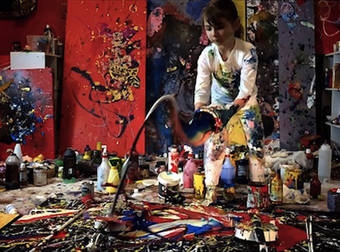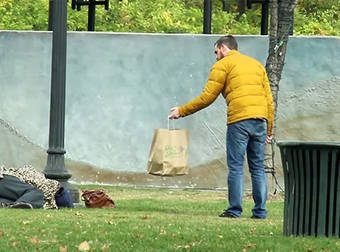Holiday card exchanging is a lifelong tradition for most families. From the awkward family photo card to the terrifying unexpected musical card, holiday cards are a pretty deeply rooted tradition. This wasn’t always the case. While people had exchanged written greetings since the dawn of the written word, Christmas cards didn’t become an established thing until 1843. Before this, people would send letters to their friends and relatives.
The first card was created by painter John Callcott Horsley for Sir Henry Cole. Cole was a popular civil servant whose network was too large for individual letters, so he had 1,000 printed to give out. The trend soon caught on in England, and people in the U.S. used to import Christmas cards from England until 1875, when they started printing them domestically.
The first Christmas card, 1843
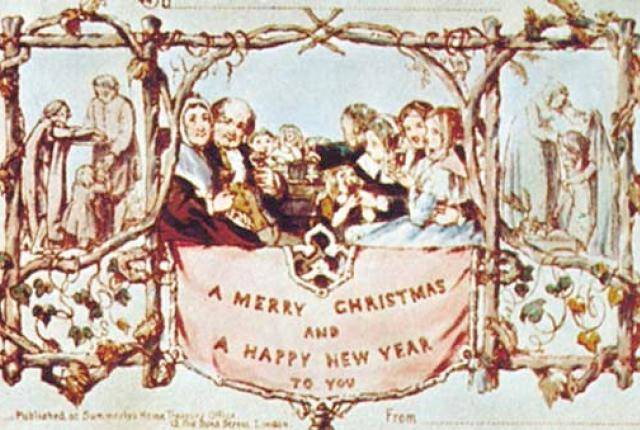 share
share
This is the card created for Sir Henry Cole. It’s folded like a triptych, with the outer panels depicting charitable deeds like feeding the hungry and clothing the naked. The center panel even shows a Christmas party. The decision to include images of alcohol consumption in the party scene got Cole a reprimand from the British Temperance movement.
When you see these cards, remember that the people making them were new at this greeting card thing. Also remember that this was the Victorian period, and their aesthetic often seems questionable today. Perhaps in 150 years, people will be horrified by cards featuring Elmo.
1. An incredibly serious dog
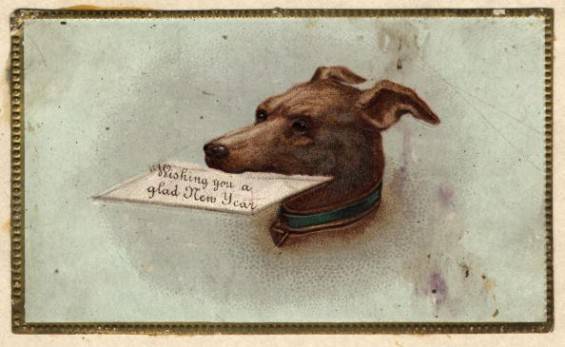 share
share
Mail-delivering, disembodied dog head brings you an 1899 New Year’s greeting and does not look happy about it. However, you have to give points for the card-on-a-card idea.
2. Menacing Santa via giant snowball, 1879
 share
share
Rolling an elderly man into a giant snowball (and stealing his shoes, apparently) doesn’t really seem like “innocent mirth.” It’s more like these two ladies are strong-arming Father Christmas into getting them some better presents.
3. This sarcastic-looking fox
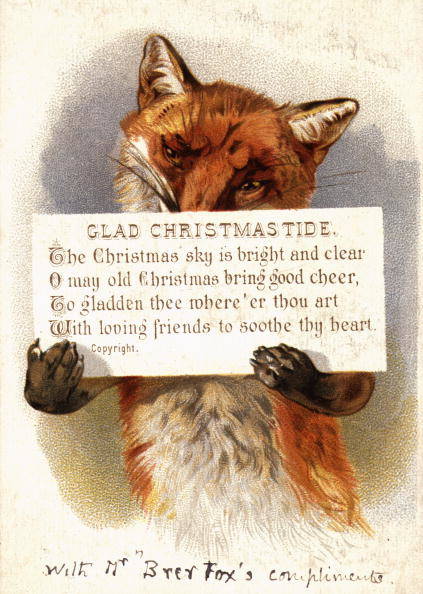 share
share
I don’t think the fox here believes a word of its Christmas greeting, judging by those smirky eyebrows. This card from 1900 also features a handwritten note on the bottom.
4. Strolling Robins
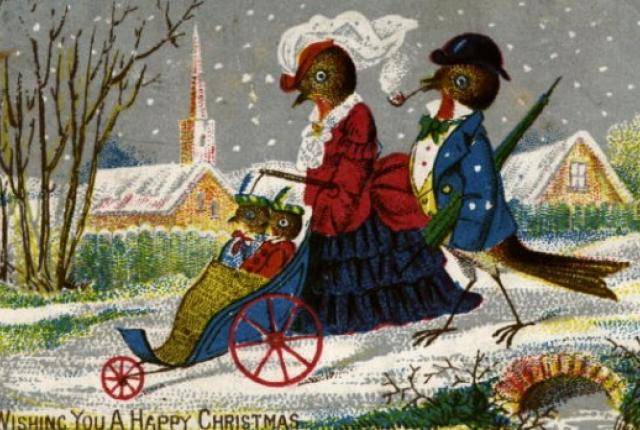 share
share
While we associate robins with spring, they were associated with Christmas in the 1800s, possibly because of their red coloring. Anyway, we love this card for the robin children’s thousand-yard stares and robin mom’s judging.
5. The creepy face that overshadows the Christmas tree
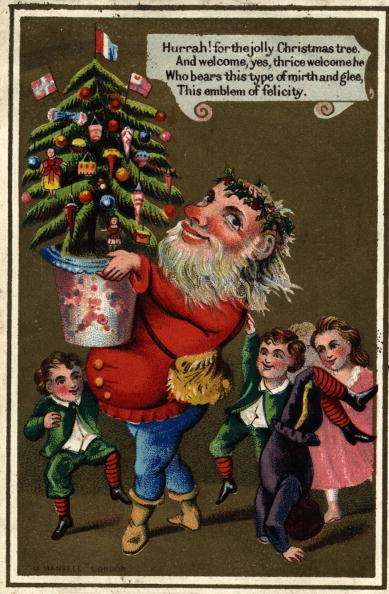 share
share
Santa, known at the time as Father Christmas, looks a bit demonic in this 1885 card. The children seem like they’re waiting for him to put it down so they can open their presents. They’re all hoping for necks this year.
6. Child on outsized insect
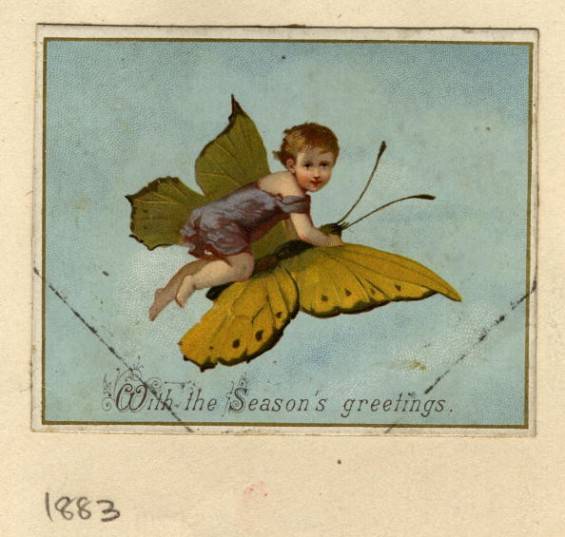 share
share
This 1883 card is kind of cute, though like the robins, a modern audience might find it more suited to spring than Christmas.
7. Gingerbread (?) monument building and cat
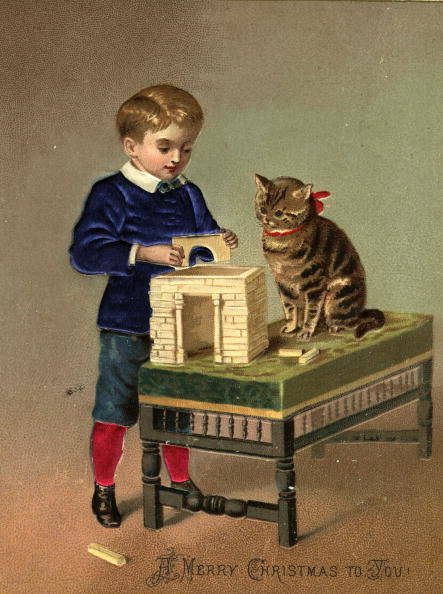 share
share
According to this 1885 card, slapping bows on unwilling pets is not a new thing. You know how hard that cat is going to destroy that building as soon as the boy turns his back.
8. All aboard the Christmas lobster, 1880
 share
share
This card reads “Peace, Joy, Health, Happiness” in French, which is a standard holiday wish. Not so standard are the mouse and the lobster, specifically the mouse riding the lobster. Also, that festive red seems to suggest that the lobster has already been cooked, and the idea of a rodent on your lobster dinner is, well, gross. Illustrations of the natural world were popular during this time, which may be one explanation, but it seems like a stretch.
9. Fear the Christmas emu.
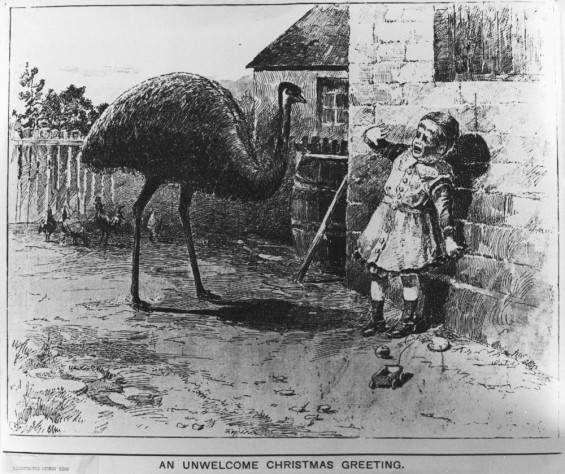 share
share
The caption on this card is not only apt for the image, but also for the card itself. Nothing says holiday cheer like the image of a child being traumatized by an enormous bird. It’s likely that this was meant to be humorous (and it kind of is), but this is still one of the most bizarre Christmas cards I’ve ever seen.
If you find yourself getting tired of the Hallmark staples, consider bringing some of these back to life. That emu card is sure to make some holiday memories for years to come.
(Via Mental Floss)
 share
share
 share
share
 share
share
 share
share
 share
share
 share
share
 share
share
 share
share
 share
share
 share
share

